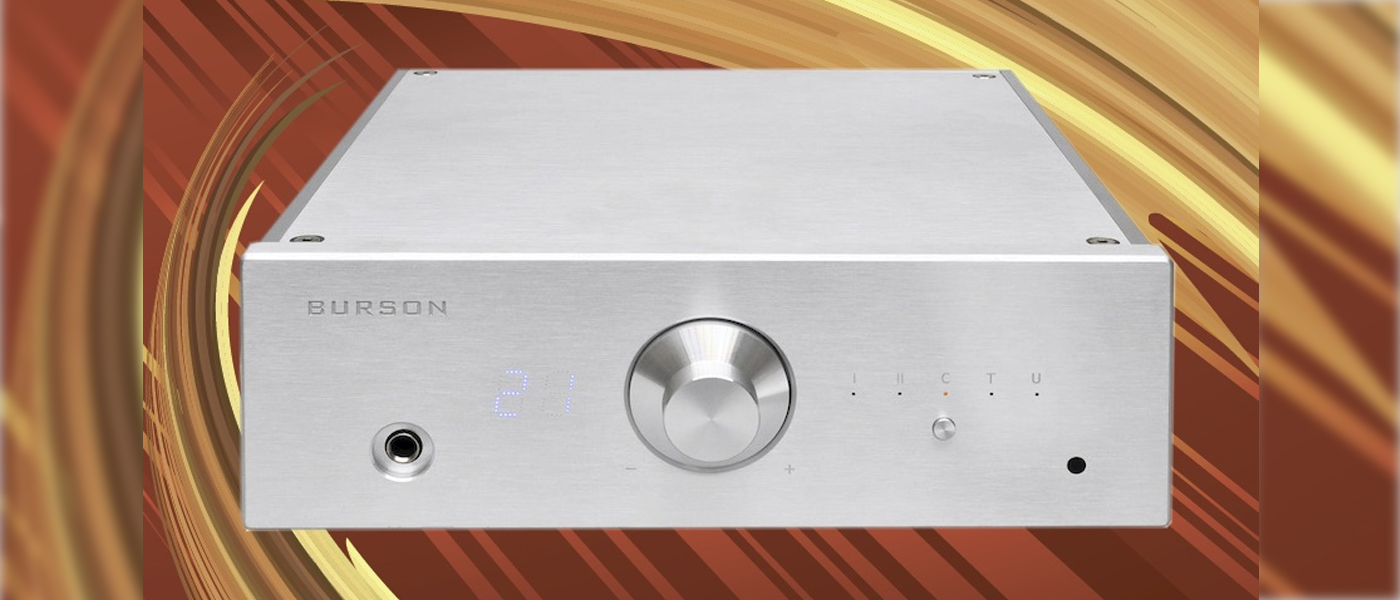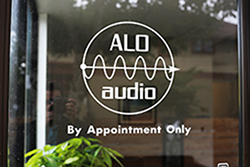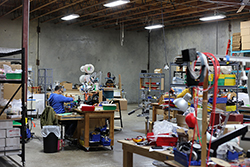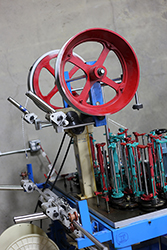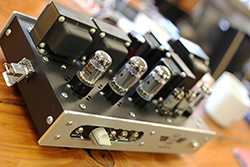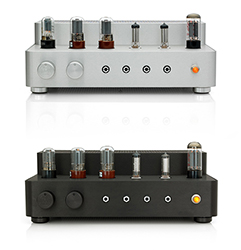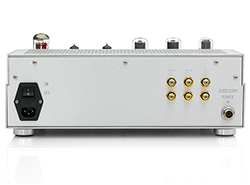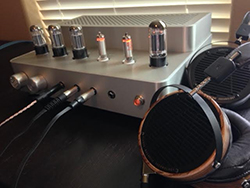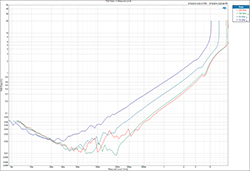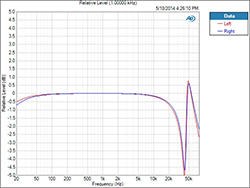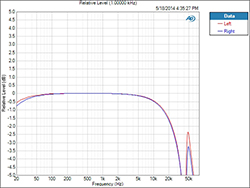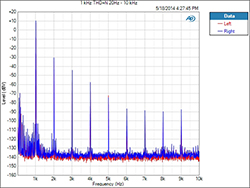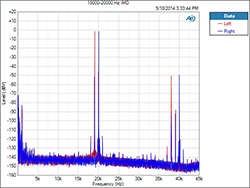ALO Studio Six Tube Headphone Amp Review Highlights
The ALO Studio Six is a Class-A single-ended triode circuit design with zero feedback. It delivers a warm and rich tone via its full vacuum tube amplification. It isn’t cheap but it delivers a lot of quality tube power for its cost. I found the Studio Six to pair wonderfully with the Audeze LCD-3 planar magnetic headphones.
Secrets of Home Theater has reviewed some of the latest headphone amps over the last few years. And even though the ALO (AudioLineOut) Studio Six tube headphone amplifier has been out for nearly a year, I could not turn down a chance to review it. The unit is big, heavy, and built to last a lifetime, yet still beautiful to look at. The Studio Six is built with enough power to drive multiple pairs of 32ohm or greater headphones, and it does so with grace and musicality. The ALO Studio Six is not a small investment at $3900, but in return you get a hand built, here in Portland, Oregon in fact, single-ended vacuum tube amp encased in high-grade aluminum. If you are looking for that mesmerizing harmonic signature SET tube designs provide, and want an amp made to last a lifetime, the Studio Six is one of the very best options available. Your wallet may not thank you, but your ears certainly will.
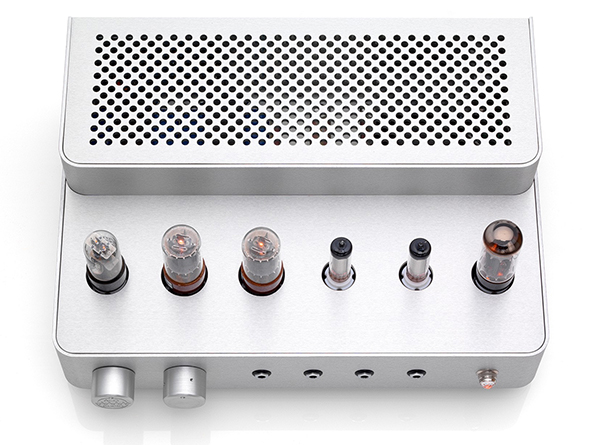
ALO Studio Six Tube Headphone Amp Highlights Summary
- Beautifully lush, musical, warm sound
- Quiet for tube
- Built to last a lifetime
- More power than you could ever need
- Allows for multiple listeners
Introduction to the ALO Studio Six Tube Headphone Amp Review
As a Portlander myself, I have known about ALO (AudioLineOut) for many years and even used to work a few blocks away from their old store front. ALO focuses mainly on personal/portable audio with a wide range of beautifully made high end cables along with their crowning jewel, the Studio Six. The Six is a fully tube-based headphone amp meant for home and designed to power high impedance headphones.
ALO STUDIO SIX TUBE HEADPHONE AMP REVIEW SPECIFICATIONS
- Design: Tube Headphone Amplifier
- Headphone Impedance Compatibility Range: 8 Ohms to 600 Ohms
- Amplifier Input Impedance: 95 kOhms
- Amplifier input Voltage for full-rated Output Voltage into Various Headphone Impedances:
- 1.00V RMS Input for 4.0V RMS Output into 16 Ohms
- 1.30V RMS Input for 5.7V RMS Output into 32 Ohms
- 1.70V RMS Iput for 7.5V RMS Output into 75 Ohms
- 1.85V RMS Input for 8.3V RMS Output into 150 Ohms
- 1.70V RMS Input for 8.2V RMS Output into 300 Ohms
- 1.65V RMS Input for 8.1V RMS Output into 600 Ohms
- THD+N (1 kHz Input) at 1V RMS Output into Stated Load Impedances: 32 Ohms: 0.26% / 150 Ohms: 0.12%
- THD+N (1kHz input) at 250 mW Output into Stated Impedances: 32 Ohms: 1.0% / 150 Ohms: 2.0%
- MFR: -3dB (Referenced to 1kHz, 250 mW Output) into Stated Impedances: 32 Ohms: 6.0 Hz to 39 kHz / 150 Ohms: 16.5 Hz to 36 kHz
- MFR: -1dB at Full-rated (2.83V RMS) 1,000 mW Output into 8 Ohms: 15 Hz to 20 kHz
- S/N Ratio: 78 dB (unweighted) below Full 2.83V RMS Output into 8 Ohms
- MSRP: $3,900 USD
- ALO Studio
- SECRETS Tags: ALO, Studio Six, Tube Amp, Headphone Amp, 2014 Headphone Amp Reviews
My first real audiophile setup used a Jolida integrated tube amp and it gave me the opportunity to hear the benefit of using vacuum tubes for music. Of course there were a few drawbacks, like tube replacement and the occasional bias adjustment. Fortunately, with the Studio Six’s over-built engineering, you don’t have to worry about bias adjustments and the circuit is designed for long tube life, although you might find yourself experimenting with other tubes. The Studio Six is big, it’s beefy, and it’s an all American design, built right here in my home town of Portland, Oregon.
Ken Ball, president and founder of ALO Audio, was kind enough to give me a tour of their office on the east side of Portland.
Inside this office they are handling all the design, testing and manufacturing of ALO products. All those beautiful cables they make are braided and terminated right here in Portland, on this incredible looking piece of machinery:
And the early prototype of the Studio Six:
The Studio Six is hand-assembled here with many parts, including the aluminum chassis, locally sourced. A lot of tweaking and testing of different parts went into the design of the Studio Six, along with plenty of blood, sweat and tears from Ken Ball, circuit designer Thomas A Martens, and the ALO Team. All that passion has paid off and if you have made the plunge into the warm bath-like waters of high-end personal audio, then the ALO Studio Six is the ultimate tube amp with which to drive those high performance headphones.
Design and Setup of the ALO Studio Six Tube Headphone Amp
The Studio Six is a Class-A singled-ended triode design which makes for a robust stature. The Six comes in either brushed black or silver finish. I was sent the silver and if you are a fan of the tube look, you will definitely like the Six. At 16” wide, 11.5” deep, 5.75” tall, and weighing in at almost 27 lbs, it is a beastly headphone amp and is built to last through the next World War. It’s a beautiful piece of equipment that looks both modern and classic at the same time. This is a unit you want to be seen, not hidden away in some AV cabinet. It is common for tubes to be under a cage or hidden within the chassis, protecting the user and curious kids from touching the hot tubes when in use. Here the vacuum tubes on top the aluminum chassis, allowing the listener to enjoy the mesmerizing orange glow tubes create. Of course, proper care with placement of the Studio Six should be taken into account when kids or pets are present. On the front are four 6.3mm headphone outputs and knobs for input selection and volume. Power is turned on and off with a switch on the back of the unit and opposite of the power switch and cable are three RCA inputs. Finishing up the back panel is an odd little circular plug which is designed to power an outboard phono stage. The phono stage in the planning phase, but no release date has been set. Ken did give me a glimpse of it at the office, so it does indeed exist and is coming!
Perhaps you noticed that there are no balanced inputs or outputs on the Studio Six. Since the design is a single-ended triode circuit, no feedback is generated. Adding a balanced output would serve little purpose other than mental piece of mind. The Studio Six output stage can drive headphones from 8ohm all the way to 600ohm, without a sweat. In fact, it had no issue driving a pair of HE-6, LCD-3, and LCD-X all at the same time due to its overbuilt power supply. This is truly the ideal headphone amp for shared listening. If there were ever a headphone event that required many sets of high quality cans, there isn’t another amp on the market that would fit the bill like the Studio Six.
ALO hand picks the tubes for the Studio Six. Included with my review unit were an Electro Harmonix 6SN7, two Tung-Sol 6V6’s, two Raytheon OB2’s, and a JJ GZ64. Plugging the tubes in along with hooking up power and a source is all it takes to get going. You will want to take on the role of a gentle giant when plugging in the tubes. It will take a bit of force to seat them into the sockets. I hooked up several sources including two from Meridian, their Prime and Explorer units, and a Sony UDA-1 DAC. I listened via the Audeze LCD-X, LCD-3, and the HiFiMAN HE-6 planar magnetic headphones.
The ALO Studio Six Tube Headphone Amp In Use
It is always good to let tube gear warm up for a bit before beginning a listening session. I would usually give the Studio Six around 20 to 30 minutes of warm up time before engaging in some listening.
Chesky’s Ultimate Headphone Demonstration Disc has some phenomenal recordings, including “Don’t You” by Amber Rubarth. By using a binaural recording technique that places the microphones in the ears of a dummy head, Chesky recreates the entire band on the stage in front of the listener through headphones. The effect does not sound fake or processed in any way. It does however sound fantastic. Amber’s voice is clear but with the presence of a strong female vocal you would expect in a live performance. Every instrument on stage has a depth that I have never heard before on headphones. With the 4 outputs on the ALO, I was able to A-B the Audeze LCD-X and LCD-3 planar magnetic headphones. I was curious how the two compared, hearing many good things about the X and that many actually preferred them over the top of the line 3. Since this isn’t a review of the headphones, I will keep it simple and say that I still prefer the sound from the LCD-3. Via the ALO they both sounded natural, smooth, yet strong and dynamic, like they could fill the house with sound. With the HiFiMAN HE-6 the soundstage was incredibly wide and open, something the HE-6 excels at. I had to crank up the volume to about 75% with the HE-6, but the Studio Six delivers a huge, natural sound to these headphones at that level. It gives you the feeling of being in the same room as the performance.
The ALO Studio Six continued to deliver exceptional soundstaging on The Black Keys “Little Black Submarines” on both the HiFiMAN and Audeze. Auerbach’s voice sounds just like he’s on stage in a small club. When the guitars shred towards the end, the tubes deliver such a lush sound you only want to crank up the volume more. The sound is rich and what I can only describe as chewey – like there’s something there beyond sound. Continuing through the El Camino album, the Studio Six delivers such velvety sound I couldn’t stop listening. Bass was thick and clean, but lacking some of the definition and speed you get from a solid state amp. Still, I couldn’t stop listening and kept turning up the volume for more of that richness.
With something more sonically challenging like Radiohead’s King of Limbs album, the ALO took a bit of the edge off the almost chaotic sound. The tradeoff, often common with tube amplification, was a touch of murkiness in the upper bass octaves. Low end extension was exceptional and packed the punch necessary for rock music of any genre. Another example was on Santana’s “Con Santana” from All That I Am where the kick drum slams hard, creating a pop of air pressure. On a track by Skrillex from the Spring Breakers soundtrack, the ALO delivered silky smooth upper octaves to the LCD-3. After cranking the volume down, the more efficient LCD-X sounded more at home with this kind of music. The Studio Six has tremendous control over the extra bass the LCD-X are capable of. The synth bass sweeps Skrillex uses extend smoothly into the lowest octaves.
The ALO Studio Six pairs brilliantly with the Audeze planar magnetics. This is the kind of personal audio performance akin to 2 channel speaker setups costing tens of thousands of dollars and, hey, you can listen to your music as loud as you damn well want to! The four 6.35mm outputs allow multiple people to listen simultaneously too, which is great if you and your significant other wish to share music.
The ALO Studio Six Tube Headphone Amp On The Bench
Measurements ALO Studio Six
David A. Rich Ph. D.
No schematics were available but this appears to have been designed using only parts available in the 1940s to early 1950s. No solid state components appear to have been used. Common cathode amplifier stages may have local feedback from a resistor in series with the cathode, but the Studio Six employs capacitor-bypassed cathode resistors on all amplifier stages to insure no feedback of any type.
The test instrument used for this section was the Audio Precision APx 585 and APx 582. Use of these was generously provided by Audio Precision.
Readers may be surprised at the size of this report. The unit is not badly designed within the restrictions the designer has set for himself and its performance may provide some insight into the subjective sound quality.
Headphones impedance varies significantly depending on model. The figure above shows the maximum voltage the ALO Studio Six can drive into loads that differ by a factor of 20. The maximum signal level that could be applied before the 1kHz THD exceeded 1% was 4.2VRMS at 150 Ohms, 2.7VRMS at 33 Ohms and 1.6VRMS at 15 Ohms.
The clipping point appears to be at 3% THD. This occurs at 6.2VRMS into 150 Ohms, 5VRMS into 33 Ohms and 3.6VRMS into 15 Ohms. The ALO Studio 6 has 4 headphone outputs jacks. In that usage four 150 Ohm headphones will present a load of 37 Ohms to the output stage.
At the lower impedances we could use power as a metric. Into a 15 Ohm load at 1% THD the Studio Six sources 170mW average and at a THD level of 3% it sources 860mW average.
The signal to noise ratio was 74dB (flat filter with 20kHz cutoff) in the worst channel. SNR increased 2dB moving from the volume control from the unit gain setting (0dB) to maximum gain for all loads. The maximum gain was 16dB (6) for a 330 Ohm load. The output declined 1dB with a 33 Ohm load with the volume at maximum. With a 16 Ohm load the gain declined another 1dB.
The power supply hum spurs were -92dB at 60Hz, -80dB at 120Hz Higher frequency hum spurs are below -100dB with those above 360Hz below -110dB. The power supply rectification and regulation is done as it would be in the 1940s with a tube full wave rectifier, gas ionization voltage regulators tubes, and LC filters. Old tech is not so bad in the Studio Six.
An SNR of 74dB may be audible with sensitive closed back headphones and is perhaps the only measured spec to be audible, of all the tests presented in this report that can be said to be absolutely audible. No need to worry about using the best DAC boxes which can produce an SNR of 120dB.
Crosstalk in the worst case channel was 58dB down at 20Hz, 75dB down at 1kHz and 50dB down at 20kHz when the volume control was at maximum gain. When the volume was set for unity gain the separation declined about 10dB at 1kHz and 5dB at 20kHz.
The frequency response is significantly affected by the volume control position. The graph below is for the gain control at maximum.
The graph shows the frequency response is down -0.5dB at 20Hz and 20kHz with the volume control set to maximum. The -3dB point is 35kHz so the preamp is ready for high resolution files.
With the control set to unity gain the top end response drops to -1.5dB at 20kHz as can be seen below.
Perhaps young listener can hear this but they are unlikely to have the spare cash to purchase a Studio Six. The -3dB point is 29kHz.
The frequency response changed only 0.25dB at 20kHz with the 16 Ohm load indicating the output impedance is independent of frequency
Distortion Tests
I used two test conditions for distortion tests. The first set of test used a 330 Ohm load and the volume was set to maximum. The input was 500mV RMS and with a nominal gain of 6 the output was 3VRMS.
The second set of tests was used a 33 Ohm load with the volume set at unity gain. Input and output levels were at 2VRMS. Although the signal level is reduced the power being supplied to the load has increased from 28mW average to 120mW average.
3VRMS into 330 Ohms
The gain of the two channels differed by 0.6dB. The left was at 3.00VRMS and the right at 3.2VRMS.
The plot of distortion with a change in frequency is shown below
The right channel did constantly less well than the left perhaps a result of the higher signal amplitude. Thomas A Martens notes that this is likely due to normal internal production variation between tubes and better hand testing and tube selection would have mitigated some of this discrepancy. For the left channel the distortion from 100Hz to 20kHz is about 0.75% rising to 1.75% at 20Hz. The top figure in this report shows the 1kHz distortion at 1VRMS reduces to 0.15%
The spectra for a 1kHz output at 3VRMS is shown below. The Y axis is in dBV so the 3.2VRMS output is 10dBV.
The right channel had worst value of THD at 0.95%. The left channel had a THD of 0.64%.
Since this is single ended output stage with no feedback all harmonics are present. They rate the harmonics reduce in level is dependent on the open loop non-linearity of the single vacuum tube at the output.
For left channel (covered by the higher harmonics of the right channel) the 2nd harmonic is down 44dB, the 3rd down 56dB and the 4th down 68dB. All other harmonics are below 84dB with the 6th and above down 100dB.
A tube aficionado may say the harmonic structure is a key attribute to the sound. The change in harmonic structure with level is also said to be important but I do not want to send the reader into graph overload.
2VRMS into 33 Ohms
For this test, a 2VRMS signal was applied with the volume control changed for unity gain.
The change in distortion with frequency is shown below.
Again, the right channel had a slightly higher gain (2.1VRMS) than the left channel which was set to 2VRMS. The right channel had higher distortion. The level difference is not big enough to account for this. Distortion from 200Hz to 20kHz in the right channel is about 1.75% rising to 3% at 20Hz. The top figure in this report shows the 1kHz distortion at 1VRMS reduces to 0.3% for a 33 ohm load.
The unit is clearly not falling apart with the lower impedance loads in both the frequency response and distortion tests even for the 16 Ohm load. It is difficult to design a tube circuit, with no feedback, to drive a 20 to 1 load difference without a change in transformer taps.
For the 1 kHz spectrum below, the Y axis is in dBV, so a 2VRMS signal level is 6dB up.
THD was 0.99% for the right channel but 0.71% for the left. Note the noise floor is not flat for the right channel while the left channel is more typical although some rise in the noise floor can be seen around the fundamental.
For the right channel the 2nd harmonic is thus 41dB below the fundamental level, the 3rd harmonic down 60dB and the 4th down 74dB. All harmonics above the 6th are down more than 100dB down.
The 19kHz / 20kHz IM test is surprisingly clean.
The test tones are reduced 1dB as a result of the high end roll-off of the ALO with the volume at unity gain. The spectrum is almost free of significant in-band spurs. The largest spur is power supply hum. The 1kHz spur is -82dB down.
Conclusions about the ALO Studio Six Tube Headphone Amp
The ALO Studio Six is one of my new favorites for powering the illustrious Audeze headphones. The combination is straight up intoxicating. It might be slight overkill for the easier to drive LCD-X, but it sure sounds wonderful. On the other hand, the more demanding LCD-3 absolutely flourishes with the quality power the ALO Studio Six delivers. Don’t get me wrong, the ALO does a phenomenal job with the HiFiMAN HE-6 as well. It provides ample power, allowing the detailed low end of the HE-6 to really come alive. You absolutely cannot go wrong with these combos. ALO has successfully created a hand-built tube headphone amp to last a lifetime that produces sweet, sensual music for the ears.


